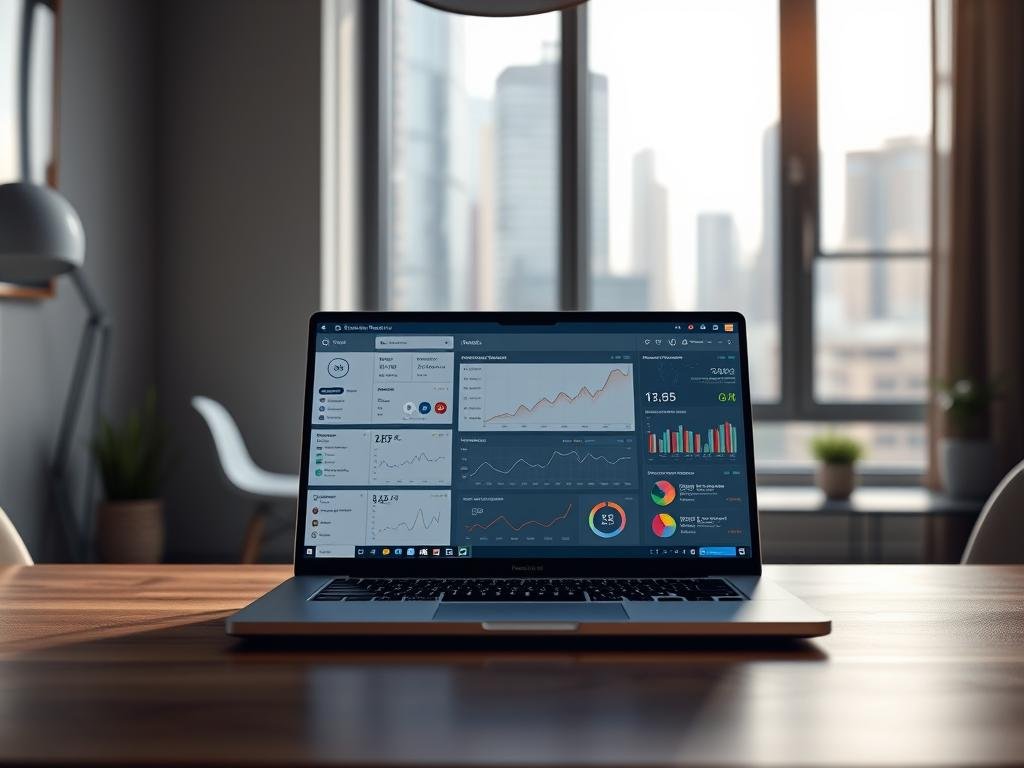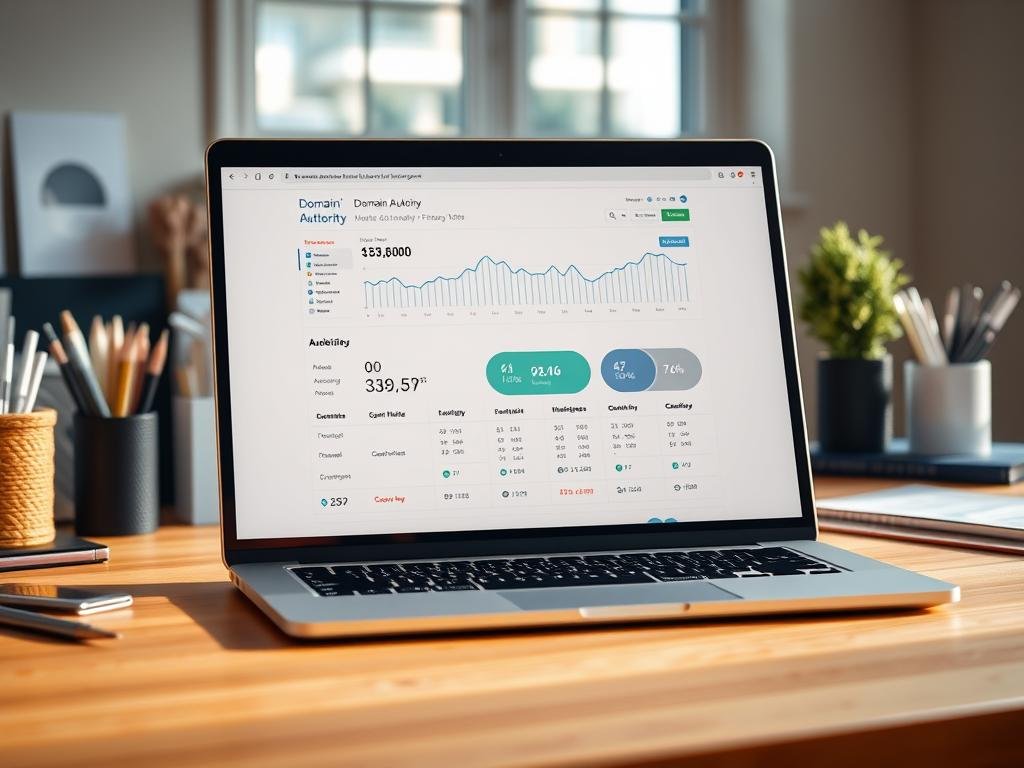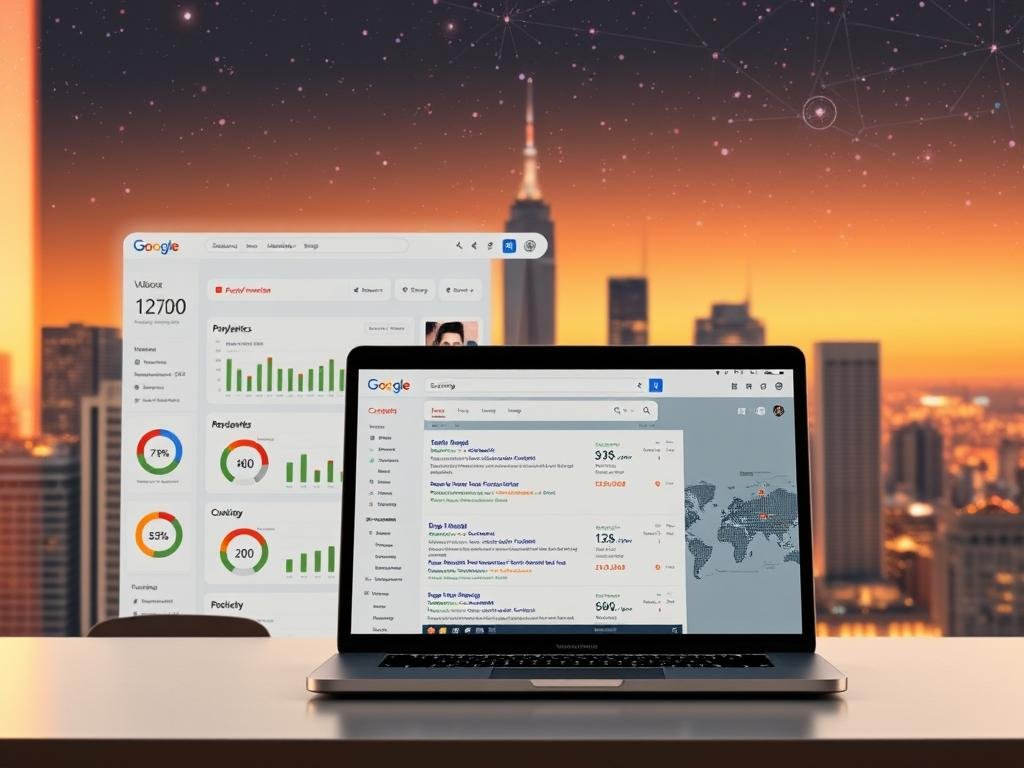
Optimize Your Site for Higher Visibility: SEO Techniques That Work
Understanding Website Visibility and Its Importance
In today's digital landscape, having a visible website is crucial for success. With millions of sites competing for attention, effective SEO strategies can make all the difference in your search engine rankings.
This comprehensive guide explores proven SEO techniques that significantly improve your website's visibility in search engine results. By understanding how search engines discover, evaluate, and rank content, you'll be able to optimize your site effectively and attract more targeted traffic.
Enhancing your site's user experience and content quality are key to achieving higher search engine rankings. Our guide covers both basic and advanced SEO techniques that work across different types of websites and business models.
Key Takeaways
- Understand how search engines discover and rank content
- Learn effective SEO strategies to improve website visibility
- Enhance user experience and content quality
- Implement sustainable, white-hat SEO practices
- Optimize your site for higher search engine rankings
Understanding Website Visibility and Its Importance
Understanding website visibility is essential for businesses aiming to establish a strong online presence. Website visibility refers to how easily a site can be found by users searching for relevant content online. In today's digital landscape, having a website is not enough; it needs to be visible to potential customers.
What Is Website Visibility in Search Engines
Website visibility in search engines like Google, Bing, or Yahoo is determined by how well a site is optimized for search. It involves understanding how search engines index and rank websites. The higher a site ranks, the more visible it is to users searching for related keywords or topics.
Why Higher Visibility Matters for Your Business
Higher visibility directly correlates with increased organic traffic, brand awareness, and potential conversions for your business. With over 90% of users never going beyond the first page of search results, appearing on the first page is critical for capturing user attention.
The Connection Between SEO and Website Rankings
The connection between SEO and website rankings is fundamental. Effective SEO implementation improves a site's ranking by aligning with how search engines evaluate and rank content. Understanding search engine algorithms helps businesses develop strategies that enhance their site's visibility and ranking.
By understanding website visibility and its importance, businesses can invest time and resources in SEO to drive growth in the digital landscape.
How Search Engines Discover and Index Your Content
The journey of your content from creation to appearance in search engine results involves crawling and indexing by search engines. This process is fundamental to your website's online presence.
The Basics of Search Engine Crawling and Indexing
Search engines like Google use automated crawlers (also known as spiders or bots) to discover new and updated content. These crawlers follow links from known pages to discover new URLs and content across the web. Once content is discovered, it is indexed, meaning it is stored and organized in massive databases to be retrieved when users search for relevant terms.
How Google Evaluates Your Web Pages
Google evaluates web pages based on hundreds of ranking factors, including content quality, relevance, user experience, and authority. Understanding these factors is crucial for optimizing your website's visibility.
Checking If Google Can See Your Content Properly
To ensure Google can properly see your content, use tools like Google Search Console. This tool allows you to inspect URLs, understand how Google crawls and indexes your site, and identify any issues that might prevent your content from appearing in search results.
Keyword Research: The Foundation of Effective SEO
Understanding user search intent through keyword research is crucial for SEO success. It forms the foundation of an effective SEO strategy, helping you understand what your target audience is searching for online.
Conducting Comprehensive Keyword Research
To conduct comprehensive keyword research, you'll need to use tools like Google Keyword Planner, SEMrush, and Ahrefs. These tools help identify valuable search terms by analyzing search volume, keyword difficulty, and competition.
By examining these factors, you can prioritize the most valuable keywords for your business, ensuring that your content aligns with what your audience is searching for.
Understanding User Search Intent
User search intent is categorized into informational, navigational, commercial, and transactional intent. Understanding these categories helps you align your content with user needs, improving your chances of ranking higher in search engine results.
Leveraging Long-Tail Keywords for Better Rankings
Long-tail keywords (3-5 word phrases) offer valuable opportunities for newer websites to gain visibility for more specific queries with less competition. Incorporating these keywords into your content can significantly improve your search engine rankings.
Avoiding Keyword Stuffing and Over-Optimization
While keywords are crucial, it's equally important to avoid keyword stuffing and over-optimization. These practices can trigger search engine penalties, negatively impacting your website's visibility.
Instead, naturally incorporate keywords into your content while maintaining readability and user experience. Creating a strategic keyword map that assigns target keywords to specific pages across your website can maximize effectiveness.
On-Page SEO Optimization Techniques
To rank higher in search engine results, it's essential to master on-page SEO optimization techniques. On-page SEO involves strategically enhancing individual page elements to improve search visibility and user experience. This includes optimizing title tags, meta descriptions, URL structures, header tags, and internal linking to make your content more search engine friendly.
Crafting Effective Title Tags and Meta Descriptions
Crafting compelling title tags that incorporate primary keywords is crucial for enticing users to click through from search results. Your title tag should be concise, descriptive, and include the main keyword. Similarly, meta descriptions play a significant role in influencing click-through rates, even though they're not direct ranking factors. Ensure your meta description is engaging and provides a clear summary of the page content.
For example, a well-crafted title tag might look like this: "Optimize Your Website | SEO Techniques". The meta description could be: "Discover the latest SEO techniques to optimize your website and improve your search engine rankings. Learn more about effective on-page SEO strategies."
Creating SEO-Friendly URL Structures
Creating SEO-friendly URL structures is vital for helping search engines understand your page content. URLs should be concise, descriptive, and include relevant keywords. Avoid using long, complicated URLs with unnecessary parameters. Instead, opt for clean, straightforward URLs that clearly indicate the page's content.
Using Header Tags Strategically
The strategic use of header tags (H1, H2, H3) helps both users and search engines navigate and understand your content. Header tags provide a clear hierarchy of information on your page, making it easier for users to scan and for search engines to index. Use H1 tags for the main title, H2 tags for subheadings, and H3 tags for further subsections as needed.
Internal Linking Best Practices
Internal linking is another crucial aspect of on-page SEO. By linking to other relevant pages on your site, you help distribute page authority and guide users through your content. Ensure your internal links are logical, relevant, and use descriptive anchor text. This not only improves user experience but also helps search engines understand your site's structure and content.
For instance, if you're writing about SEO techniques, you might link to a related article on keyword research using descriptive anchor text like "keyword research strategies".
Creating High-Quality Content That Ranks
The cornerstone of effective SEO is creating high-quality content that meets user needs. With search engines increasingly prioritizing value to users over technical optimization alone, the importance of crafting compelling and informative content cannot be overstated.
Characteristics of SEO-Friendly Content
SEO-friendly content is characterized by its comprehensiveness, originality, accuracy, and alignment with user search intent. To achieve this, it's essential to conduct thorough research on the topic, providing unique insights or perspectives that add value to the reader.
For example, when writing about a specific topic, ensure that you cover all relevant aspects, using credible sources to support your claims. This not only enhances the credibility of your content but also improves its visibility in search engine results.
Writing Compelling Headlines and Introductions
Crafting compelling headlines that incorporate target keywords while capturing user attention is crucial. Your headline should be informative, yet enticing enough to encourage clicks.
Similarly, the introduction should immediately communicate the value of your content, keeping users engaged beyond the first paragraph. Use this opportunity to outline what readers can expect from your content, ensuring it aligns with their search intent.
Structuring Content for Readability and Engagement
To enhance readability and user engagement, structure your content using subheadings, bullet points, and short paragraphs. This format makes your content more accessible and easier to digest, improving the overall user experience.
- Use subheadings to break up content into logical sections.
- Bullet points help in listing out complex information in a simple manner.
- Short paragraphs keep the reader engaged and reduce bounce rates.
Incorporating Visual Elements Effectively
The strategic incorporation of visual elements like images, infographics, and videos can significantly enhance your content. These elements not only break up the text but also provide additional value, making your content more engaging and shareable.
For instance, an infographic can be used to present statistical data in a visually appealing way, while a video can offer a more dynamic explanation of a complex topic.
By focusing on these aspects, you can create high-quality content that not only ranks better in search engines but also resonates with your audience, driving engagement and ultimately contributing to your SEO success.
The Improvement of a Web Page's Visibility Through Technical SEO
Improving a web page's visibility requires a solid technical SEO foundation. Technical SEO forms the backbone that allows content and on-page optimization efforts to reach their full potential in search engines.
Website Speed Optimization Techniques
Website speed is a critical factor in both search rankings and user experience. To optimize website speed, techniques such as image compression, code minification, browser caching, and server response time improvements can be employed.
Utilizing tools like Google PageSpeed Insights can help measure and improve loading times. A faster website not only improves search engine rankings but also enhances user experience, leading to higher engagement and conversion rates.
Mobile Optimization and Responsive Design
With the majority of searches now conducted on mobile devices, mobile optimization is crucial. Implementing responsive design principles ensures that your website adapts to various screen sizes and devices, providing a seamless user experience.
Mobile-first indexing considerations and testing methodologies are also vital to ensure that your website is optimized for mobile users. This includes ensuring that content is easily accessible and navigable on smaller screens.
Fixing Broken Links and Implementing Proper Redirects
Broken links can significantly damage user experience and waste crawl budget. Tools like Screaming Frog and Google Search Console can help identify and fix these issues.
When content moves or changes, implementing proper redirects (301, 302, etc.) is essential to preserve link equity and user experience. This ensures that users and search engines are directed to the correct content.
Ensuring Website Accessibility and Crawlability
Website accessibility is not only important for user experience but also for SEO performance. Making your site usable for all visitors improves its overall visibility in search engines.
Technical aspects of crawlability, including XML sitemaps, robots.txt configuration, and JavaScript rendering considerations, play a crucial role in ensuring that search engines can properly crawl and index your website's content.
By addressing these technical SEO aspects, you can significantly improve your web page's visibility in search engine results, driving more traffic and potential customers to your site.
Link Building Strategies for Higher Search Rankings
To achieve higher search rankings, understanding and implementing effective link building strategies is essential. Link building remains one of the most powerful ranking factors, with quality backlinks serving as "votes of confidence" from other websites.
The Importance of Quality Backlinks
Search engines evaluate links based on authority, relevance, anchor text, and other factors to determine their impact on rankings. Quality backlinks are crucial because they signify that your content is valuable and relevant. As Rand Fishkin, a well-known SEO expert, once said, "Links are the currency of the internet, and the quality of those links is paramount."
"The most important thing is to create content that is so good, so valuable, and so relevant that people will naturally want to link to it."
Effective Methods to Earn Authoritative Links
There are several white-hat link building strategies that can help you earn authoritative links. These include:
- Content-based link earning
- Digital PR
- Resource link building
- Strategic outreach
Creating linkable assets—content that naturally attracts backlinks by providing exceptional value to your industry or audience—is a highly effective strategy. For instance, producing in-depth guides, original research, or high-quality infographics can attract links from authoritative sites.
Monitoring Your Backlink Profile
It's crucial to monitor your backlink profile regularly to identify toxic links and maintain a healthy link ecosystem. Tools like Ahrefs, Moz, and SEMrush can help you track your backlinks and analyze their quality.
| Tool | Backlink Analysis | Toxic Link Detection |
| Ahrefs | Yes | Yes |
| Moz | Yes | Yes |
| SEMrush | Yes | Yes |
Avoiding Harmful Link Building Practices
Certain link building practices can harm your search rankings. These include link buying, excessive link exchanges, and private blog networks. It's essential to focus on quality over quantity and avoid tactics that manipulate search engine rankings.
By understanding the value of quality backlinks, employing effective link earning strategies, and maintaining a healthy backlink profile, you can improve your website's search rankings and drive more organic traffic.
Local SEO: Boosting Visibility in Your Area
To attract local customers, businesses must optimize their online presence for local search engine rankings. Local SEO focuses on optimizing your online presence to attract more business from relevant local searches, crucial for businesses serving specific geographic areas.
Optimizing Google My Business Listing
A well-optimized Google My Business listing is crucial for local SEO success. This includes accurate category selection, up-to-date business information, high-quality photo uploads, and regular post publishing.
Local Keyword Targeting Strategies
Incorporating location-specific terms into your website content, meta data, and anchor text can significantly improve your local search rankings. This involves understanding local keyword research and using long-tail keywords effectively.
Building Local Citations and Customer Reviews
Building and managing local citations across directories ensures consistent NAP (Name, Address, Phone) information, which is vital for local SEO. Additionally, customer reviews play a significant role in local search rankings, and strategies for encouraging positive reviews and responding to negative feedback are essential.
By focusing on these local SEO strategies, businesses can improve their visibility in local search results, attract more local customers, and ultimately drive more sales.
Leveraging Social Media to Enhance Website Visibility
The integration of social media into your SEO strategy can significantly enhance website visibility. While social media signals aren't direct ranking factors, a strong social presence can boost overall brand awareness and drive traffic to your site.
Integrating Social Platforms with Your SEO Strategy
To maximize the impact of your online presence, it's crucial to integrate your social media platforms with your SEO strategy. This cohesive approach amplifies both your social media and search engine efforts, creating a powerful synergy that enhances your website's visibility.
Key Benefits of Integration:
- Increased brand awareness
- Improved website traffic
- Enhanced content reach
Creating Shareable Content for Social Media
Crafting content that resonates with your audience is vital for social media success. Focus on creating shareable content that encourages engagement and drives shares.
| Content Type | Characteristics | Benefits |
| Infographics | Visual, informative | High engagement, shareable |
| Videos | Engaging, storytelling | Increases dwell time, boosts shares |
| Blog Posts | In-depth, informative | Establishes authority, drives traffic |
Measuring Social Media Impact on Website Traffic
To understand the effectiveness of your social media efforts, it's essential to measure their impact on website traffic. Use analytics tools to track conversions, traffic, and brand visibility.
By leveraging social media effectively, you can significantly enhance your website's visibility, drive more traffic, and boost your brand's online presence.
Advanced SEO Techniques for Competitive Edge
In today's crowded online market, employing sophisticated SEO methods is key to standing out.
Featured Snippets and Rich Results Optimization
To capture the coveted "position zero" in search engine results, optimizing for featured snippets is crucial. This involves structuring content in a way that directly answers user queries, often through concise lists or step-by-step guides.
Rich results, on the other hand, enhance the SERP display with additional information, making your content more appealing to potential visitors.
Implementing Schema Markup for Better SERP Display
Schema markup, or structured data, provides search engines with explicit information about your content, enhancing how it's displayed in search results. For instance, using schema markup for recipes can include cooking times, ingredients, and ratings directly in the search results.
Optimizing for Voice Search and Mobile-First Indexing
With the rise of voice search, optimizing your content to answer conversational queries is becoming increasingly important. This involves using natural language and question-based keywords in your content.
Moreover, ensuring your site is optimized for mobile-first indexing is critical, as it means your website's mobile version is considered the primary version by search engines.
By implementing these advanced SEO techniques, you can significantly improve your website's visibility and competitiveness in search engine rankings.
Measuring and Analyzing Your SEO Performance
Effective SEO measurement is essential for demonstrating ROI and guiding future strategies. To achieve this, you need to track and analyze various metrics that impact your website's visibility and performance.
Essential SEO Metrics to Track Regularly
To measure SEO performance effectively, you need to track key metrics such as organic traffic, keyword rankings, click-through rates, conversion rates, and engagement metrics. These metrics provide insights into how users interact with your website and help identify areas for improvement.
Using Google Analytics and Search Console Effectively
Google Analytics and Search Console are powerful tools for analyzing SEO performance. Google Analytics helps you understand user behavior, track conversions, and measure the success of your SEO efforts. Search Console, on the other hand, provides insights into search engine rankings, impressions, and technical issues affecting your website.
Interpreting Data to Refine Your SEO Strategy
Interpreting data from Google Analytics and Search Console allows you to refine your SEO strategy. By analyzing data trends and user behavior, you can identify opportunities to improve your website's visibility, drive more traffic, and increase conversions.
To maximize the impact of your SEO efforts, it's crucial to establish meaningful KPIs aligned with your business objectives. This involves moving beyond vanity metrics to focus on metrics that have a direct impact on your business.
Common SEO Mistakes That Hurt Your Visibility
Many website owners unknowingly commit SEO mistakes that can drastically reduce their site's visibility on search engines. Understanding these common errors is crucial for maintaining and improving your website's search engine rankings.
Black Hat Techniques to Avoid
One of the most significant SEO mistakes is employing black hat techniques. These include keyword stuffing, where excessive keywords are used in content to manipulate rankings, and cloaking, which involves presenting different content to search engines than to users. Such practices violate search engine guidelines and can lead to severe penalties, including being delisted from search results.
Other black hat techniques to avoid include hidden text and link schemes. Hidden text involves making content invisible to users but visible to search engines, often by using the same color for text and background. Link schemes, such as buying links or participating in link farms, are designed to manipulate PageRank. These tactics not only risk penalties but also undermine the integrity of your website.
Neglecting Mobile and Technical Optimization
With the majority of searches now conducted on mobile devices, neglecting mobile optimization is a critical mistake. Ensure your website is responsive and provides a seamless user experience across all devices. Technical SEO is equally important; issues such as improper redirects, duplicate content, and broken internal links can significantly hinder your site's crawlability and indexability.
Site architecture and page speed are also crucial. A well-structured site facilitates easier crawling, while fast loading times improve user experience and search rankings. Tools like Google PageSpeed Insights can help identify areas for improvement.
Ignoring User Experience Factors
User experience plays a vital role in SEO. Metrics such as bounce rate, dwell time, and page speed are not just indicators of user satisfaction but also influence search rankings. A website that is difficult to navigate, slow to load, or not mobile-friendly will likely suffer in search engine results.
To improve user experience, focus on creating clear, intuitive navigation, and ensure that your content is engaging and relevant. Regularly updating your site with fresh, high-quality content can also enhance user experience and encourage repeat visits.
Failing to Update and Refresh Content
Content is a critical component of SEO, and failing to update and refresh it can lead to decreased visibility. Outdated content not only loses relevance over time but also fails to incorporate new keywords or trends. Regularly reviewing and updating your content ensures it remains relevant and competitive.
Additionally, avoid thin content and keyword cannibalization. Thin content refers to pages with little substantial information, while keyword cannibalization occurs when multiple pages target the same keyword, potentially confusing search engines. Consolidating and refreshing content can help mitigate these issues.
Step-by-Step SEO Implementation Plan
Achieving SEO success involves creating a systematic plan that aligns with your business objectives. This plan ensures that your SEO efforts are focused, efficient, and effective in improving your website's visibility in search engine results.
Setting Clear SEO Goals and Objectives
To start, it's essential to set clear, specific SEO goals that are aligned with your business objectives. Using the SMART framework (Specific, Measurable, Achievable, Relevant, Time-bound) can help you create well-defined goals. For example, you might aim to increase organic traffic by 20% within the next 6 months.
Creating a Prioritized SEO Roadmap
A prioritized SEO roadmap is crucial for focusing your efforts on the most impactful initiatives. This involves conducting an SEO audit to identify areas for improvement, assessing the effort required for each task, and prioritizing tasks based on their potential impact and dependencies.
Implementing Changes Systematically
Systematic implementation is key to ensuring that your SEO efforts are effective and sustainable. This involves making changes to your website and content in a structured manner, whether it's optimizing on-page elements, improving site speed, or creating high-quality content.
Monitoring Results and Making Adjustments
Monitoring your SEO performance regularly is vital to understanding the effectiveness of your strategies and making necessary adjustments. This involves tracking key metrics such as organic traffic, search engine rankings, and user engagement, and using tools like Google Analytics and Search Console to inform your decisions.
| SEO Metric | Baseline Value | Current Value | Change |
| Organic Traffic | 1000 | 1200 | +20% |
| Search Engine Rankings | 5 | 3 | +2 positions |
| User Engagement | 2 minutes | 3 minutes | +1 minute |
By following a step-by-step SEO implementation plan, you can ensure that your efforts are focused, efficient, and effective in achieving your business objectives.
Conclusion
Optimizing your site for search engines requires a holistic approach, incorporating technical SEO, content quality, and link building. Throughout this guide, we've explored the various elements that contribute to a website's visibility in search results. By understanding how search engines discover, index, and rank your content, you can tailor your SEO strategies to improve your site's visibility.
A successful SEO strategy balances user experience with the requirements of search engines. This includes creating high-quality, engaging content that resonates with your audience while also adhering to technical SEO best practices. As search engine algorithms continue to evolve, it's crucial to stay informed and adapt your strategies accordingly.
By implementing the techniques outlined in this guide and continually monitoring your site's performance, you can enhance your website's rankings and drive more traffic to your site. Remember, SEO is an ongoing process that requires consistent attention and adaptation to achieve long-term success.
FAQ
What is the importance of search engine optimization for my website?
How do I help search engines understand my website's content?
What is the role of user experience in SEO?
How can I optimize my website for local search?
What is the impact of social media on SEO?
How do I measure the success of my SEO efforts?
What are some common SEO mistakes to avoid?
How often should I update my website's content for SEO?

anthony jones
CEO / Co-Founder





